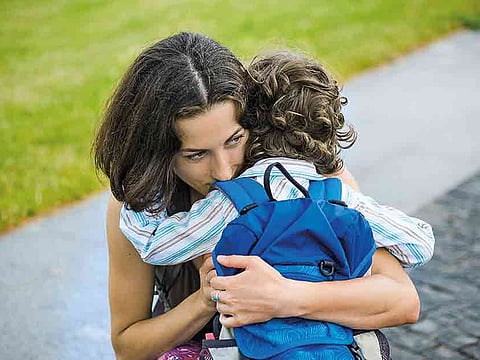Dealing with separation anxiety in young children
Separation anxiety is a normal part of a toddler’s development and a thorough understanding of the phenomenon can help parents deal with it

Ask any parent and they will be able to describe, in detail, the look of a child when they leave her alone for a period beyond her comfort zone. Regardless of the length of time or the circumstances, the child is going through separation anxiety and this is especially common with children from one to four years old.
A psychologically healthy child in that age group will show a predictable sequence of behaviour when their parents leave for work or travel. The sequence follows three phases of protest, despair and detachment.
During the protest phase, the child will cry loudly, ask for his mother, show anger and reject or cling to others. In the despair phase, the child feels hopeless, becoming physically inactive, withdrawn and in a state of mourning.
In the third and final phase of detachment, the child will seemingly have recovered and will begin to accept and interact with others, as well as with food, toys, etc. If the separation lasts, the child will suffer irreversible damage, becoming superficially attached to adults, self-centred, preoccupied with material things, food or activities.
Separation anxiety is a natural response to separation from a mother figure and is a function of age. A child is bound to his mother by instinctual response systems with high survival value and a healthy child reacts to the separation with shock, anxiety and protest. As a parent, you will also notice a secondary reaction that can include crying and refusal to leave your side. Separation anxiety is the inevitable result of attachment — the other side of the coin.
The absence of separation anxiety can often mean an absence of love relationships. The psychopathic character, a major disturbance in the early years, shows little or no separation anxiety. Unusual vigorous independence in children can reveal frozen ability to love.
– The writer is a psychologist and psychotherapist at The LightHouse
Sign up for the Daily Briefing
Get the latest news and updates straight to your inbox



